
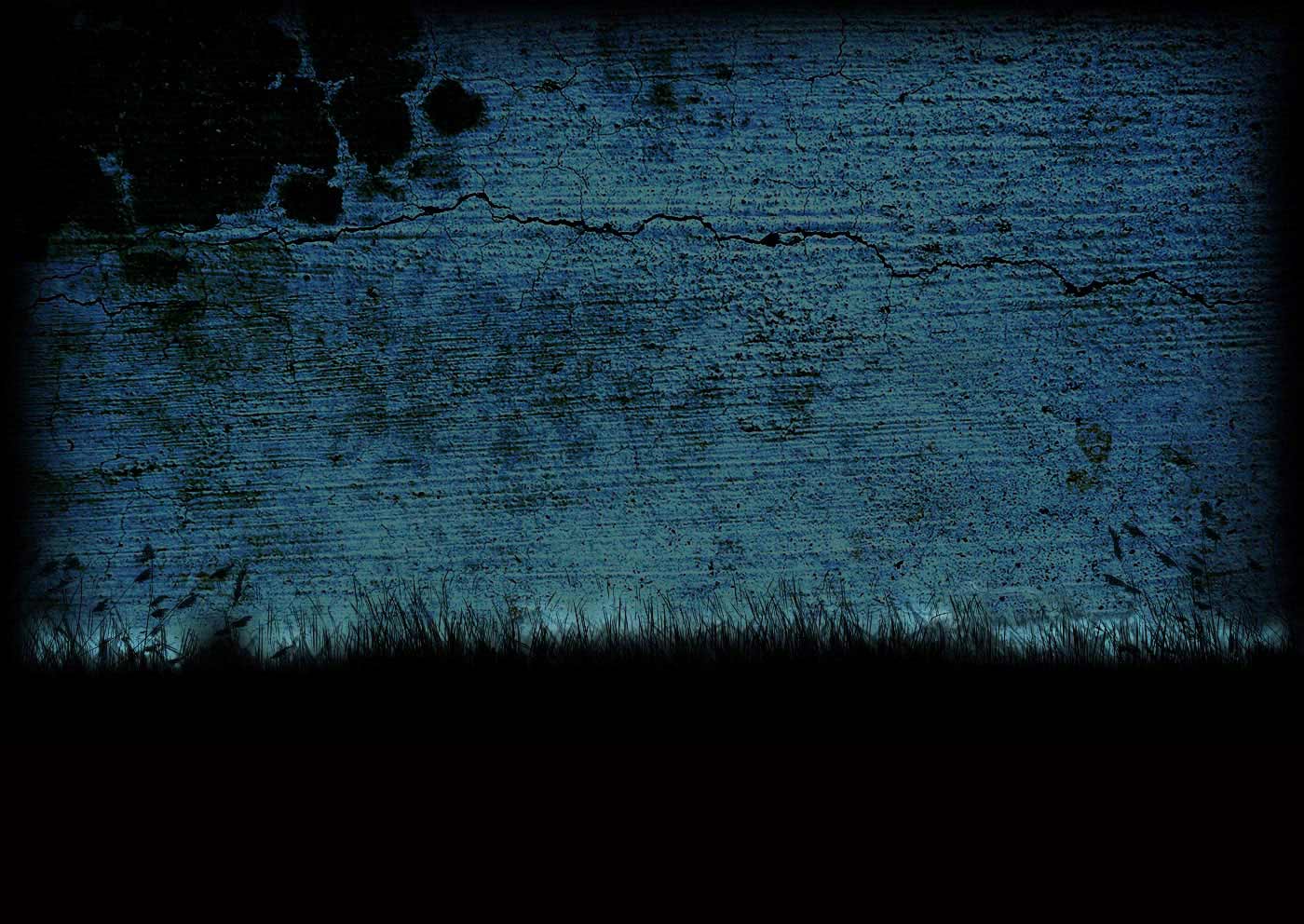
I really don't like autumn.. Nature is like dying and even if colors sometimes look amazing, it still makes me think about the winter which still has to come.. the cold.. the short and dark days..
But on the other hand, those splendid colors of autumn do have that mystical and fairytale like atmosphere which is ideal for photography.. Especially the misty environment and the low light which makes the rays of sun strike leaves in a perfect counterlight way...
Even on sunny days it mostly doesn't get completely dry during autumn. Your feet will defenitely get wet but as a reward rare flowers, spiderwebs and leafs will have those stubborn drops too afraid to let go and shining like diamonds in the low standing sun...
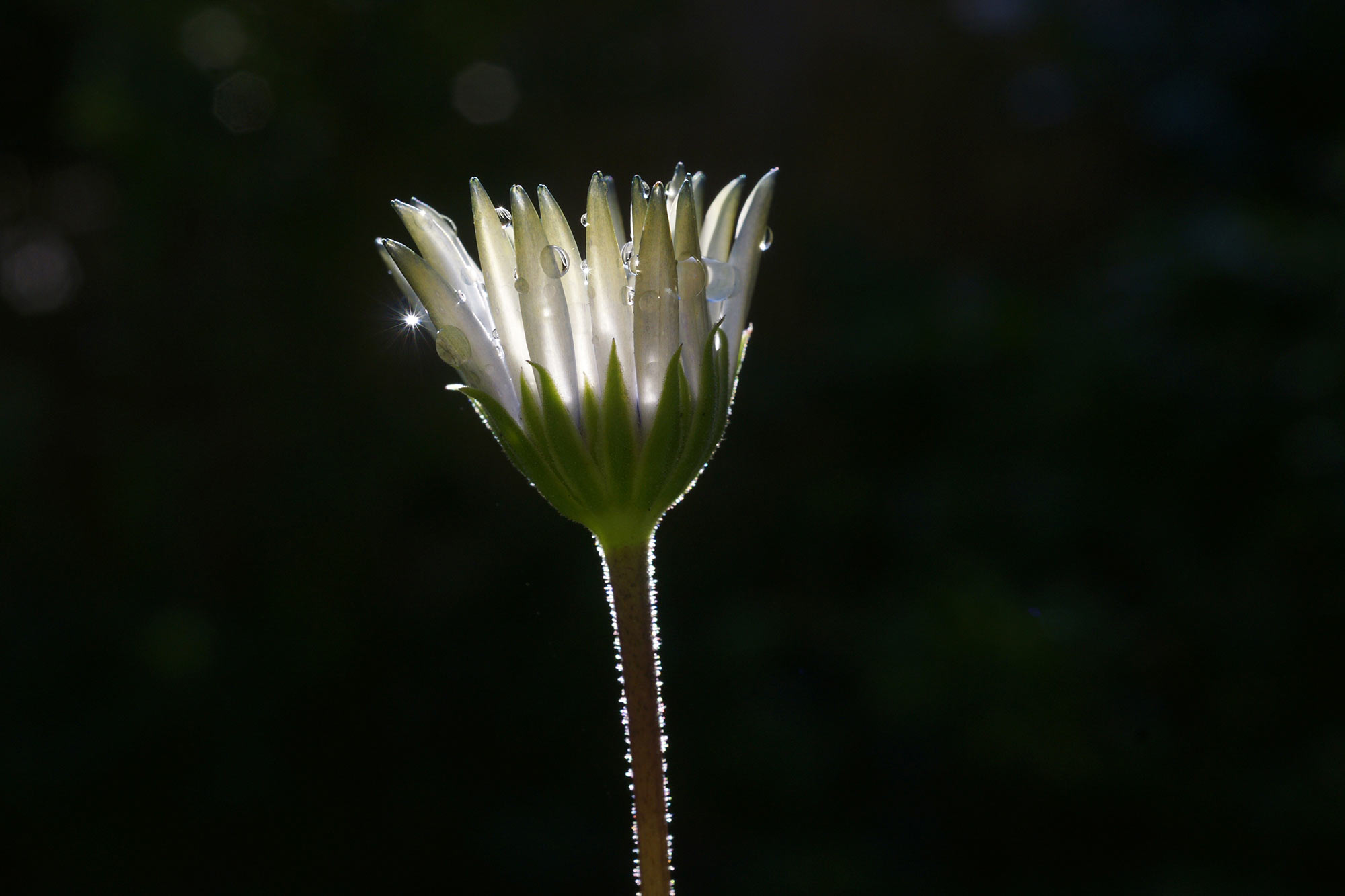
flower with waterdrops, straight against the light, holding my hand above the lens, 50 mm macro lens, 1/100 sec - f 11

colors of autumn
It's nice to go in the woods in autumn and especially with my camera with me, I often loose myself as a visitor on an alien planet..a feeling I often get while taking picturs of nature btw....
Lightning can be pretty difficult during autumn since very often, one part of your image will be shady while the other is bathing in direct and hard sunlight... Since for me most HDRI pictures look pretty unreal, I don't like to rely on that technique.. Moreover, the part in the shade often turns out bluish while the sun part strikes gold and red.
I prefer to work in direct opposition with the sun.. a principle which always works btw.. not only in autumn.. The only diffrence is that with other counterlight subjects, you will often use flash to lighten up the shadows. The use of a flash is mostly not possible with landscapes due to the large size of the area...
When one wants to capture to true beauty of autumn and the colors and shine of the sun into the dying leafs, point your lens straight into the direction of the sun.. Forget the offical rule to have the sun in your back cause in most cases it will only give you dull and flat images.. Avoid lensflares by holding your hand on top of the lens or just use a piece of hardboard for that.. Also, when taking pictures into the sun, it's a good idea to put the sun hidden behind a branche, or even better just letting it peep behind it.. If you use a good lens you even might have the luck of getting some nice star effects like in the picture of the flower on top of this page.....
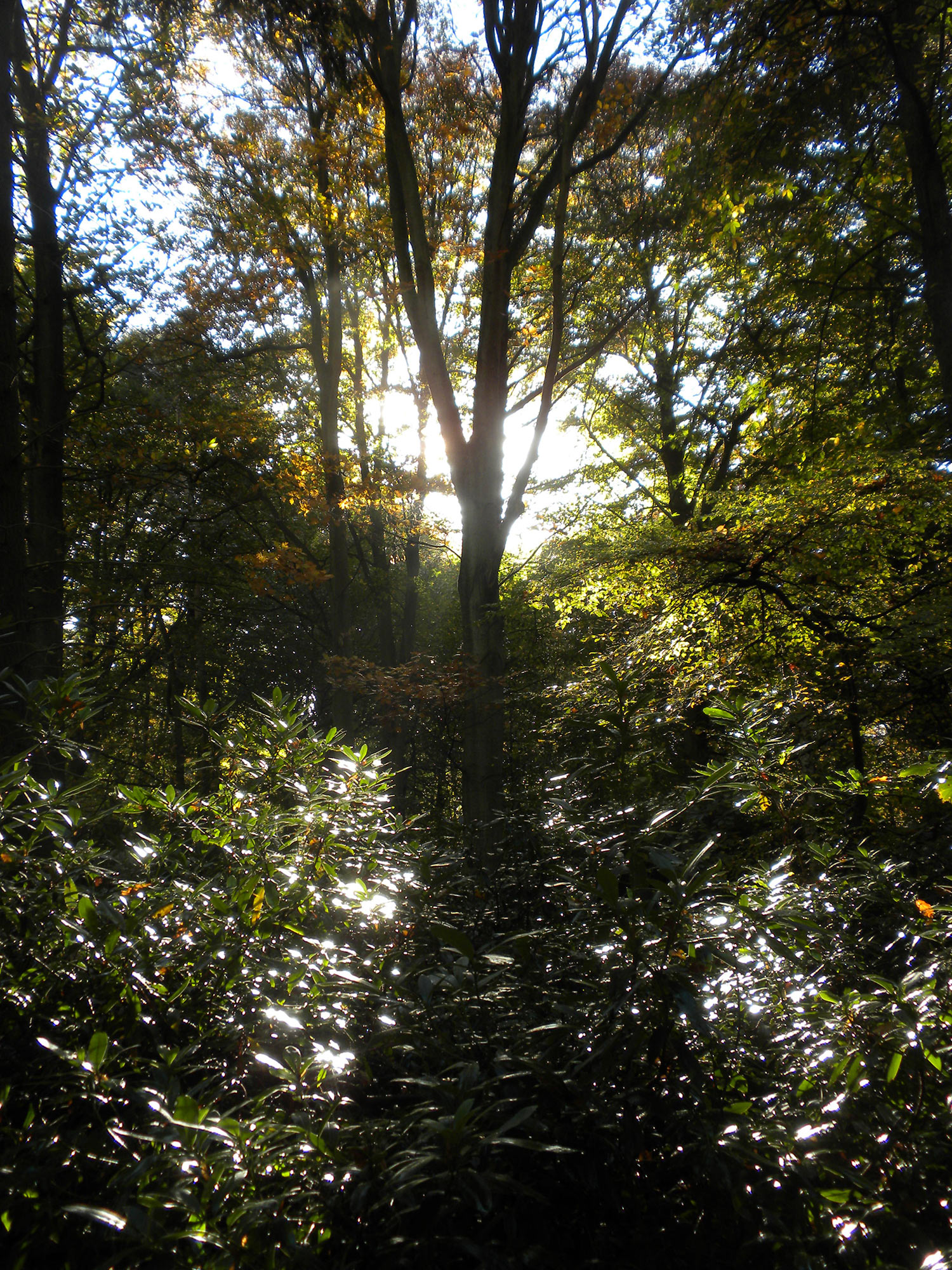
tree covering the brightest sun to prevent lensflare
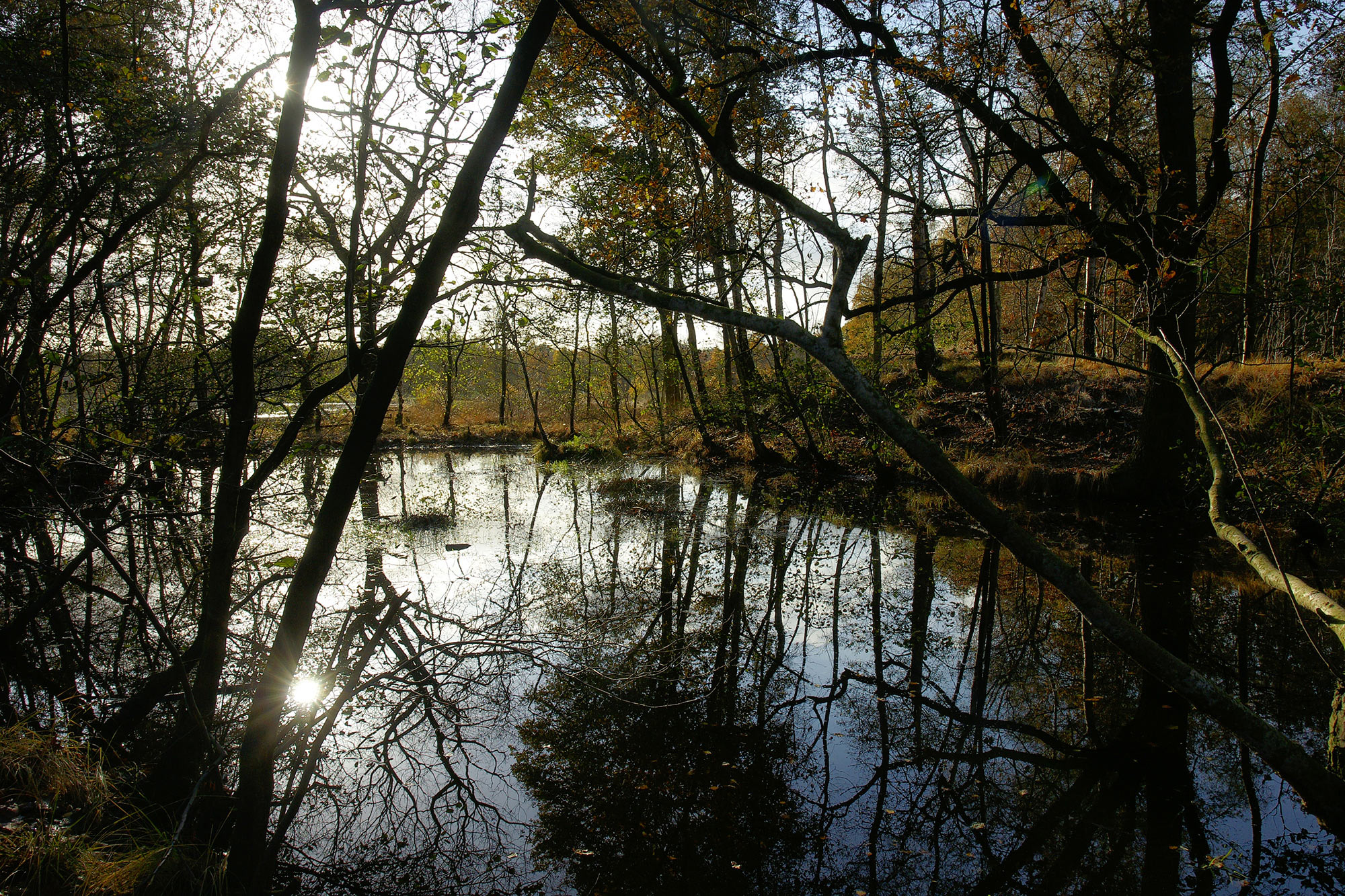 tree covering the brightest sun to prevent lensflare, Carl Zeiss 24 mm, 1/200 sec - f 9
tree covering the brightest sun to prevent lensflare, Carl Zeiss 24 mm, 1/200 sec - f 9
Watch your exposure.. When you use your camera on automatic exposure, it will often underexpose your shot because of the direct sunlight in your lens. Point your camera to a darker area without the sun, hold the exposure (or put it on manual) and then turn back to the composition with the sun into the image.
The typical autumn droves are best captured with a telelens to squeeze the lines of trees together.. It gives an impression of depth and avoids empty space between the trees. The line of trees should be connected and that effect, can only be obtained with a telelens starting from 80 mm (35 film equivalent)
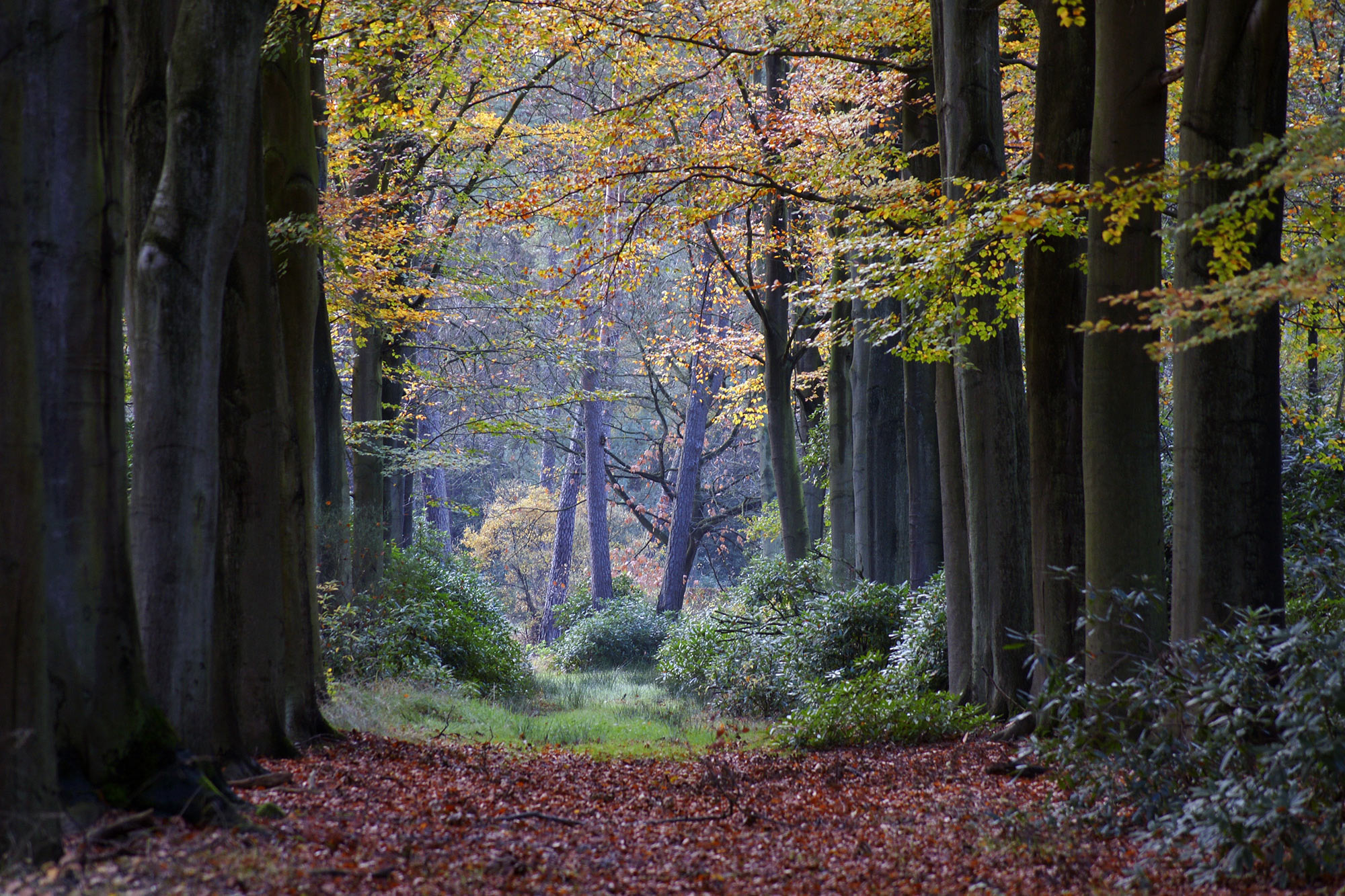
light at the end, 210 mm - 1/40 sec handheld - f 5.6
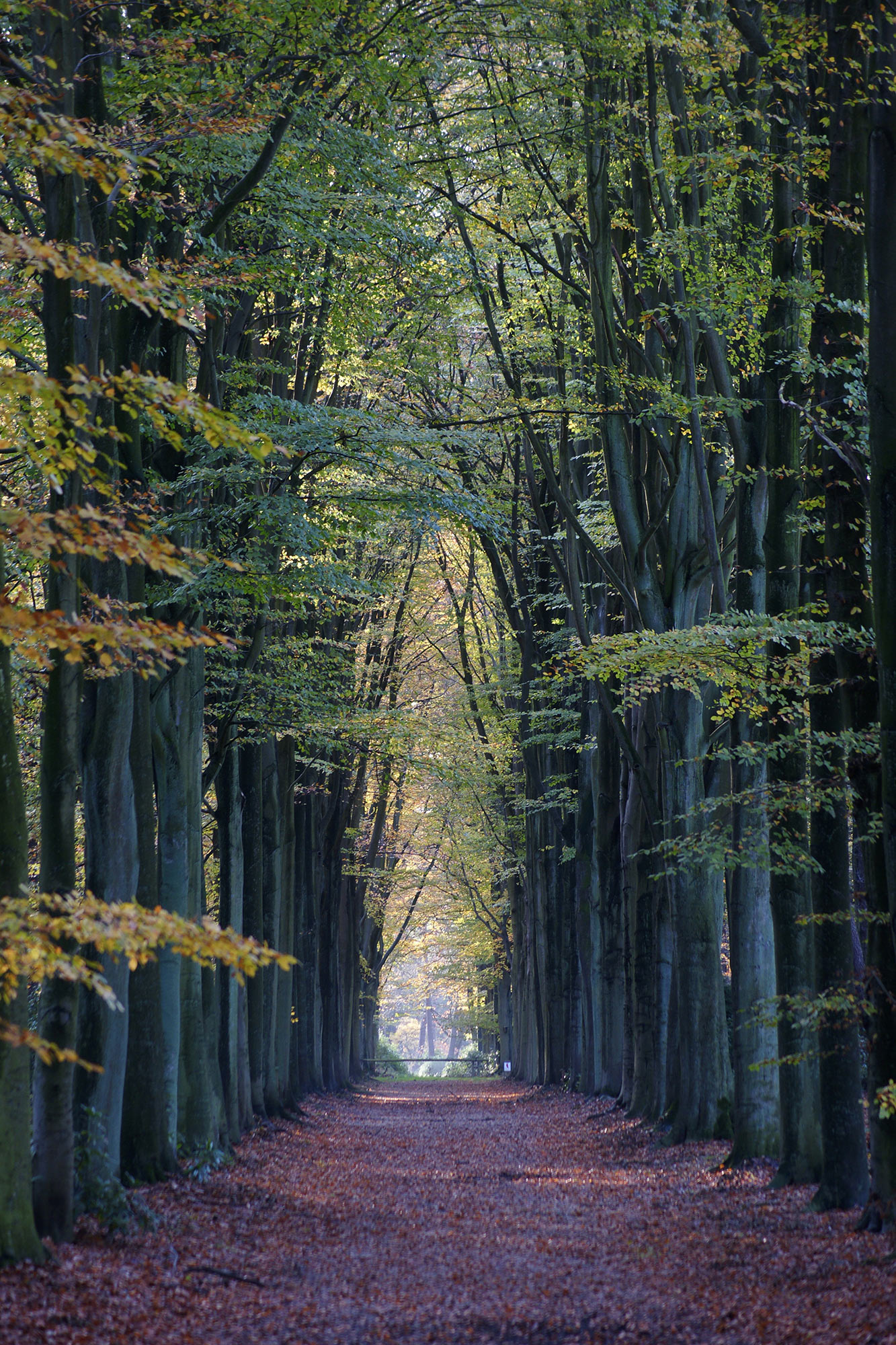
light at the end, 157 mm - 1/50 sec handheld - f 5
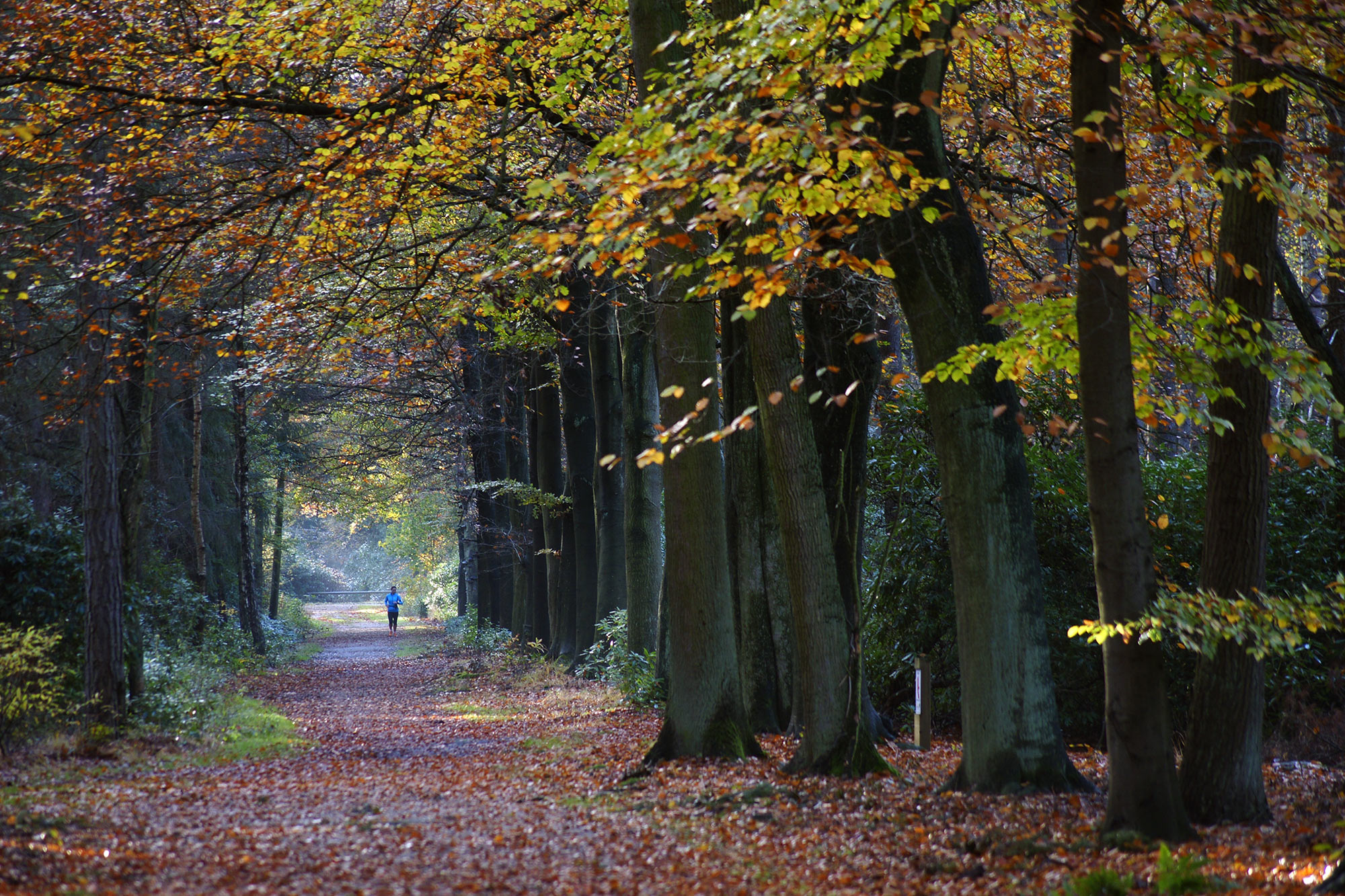 drove with runner, 210 mm - 1/40 sec handheld - f 5
drove with runner, 210 mm - 1/40 sec handheld - f 5
Wide angles are good when you want to capture a bunch of trees a little bit upwards to capture the light in the leafs...In those cases it's often necessary to look for a spot which slightly covers the sun.. that can be a branche or a stem of a tree to avoid too much lensflare in your shot.. Since in woods you often can't go backwards without loosing the right position of the sun or getting other less nice trees in front, it can be a good idea to make a panoramic shot from a big part of the area..
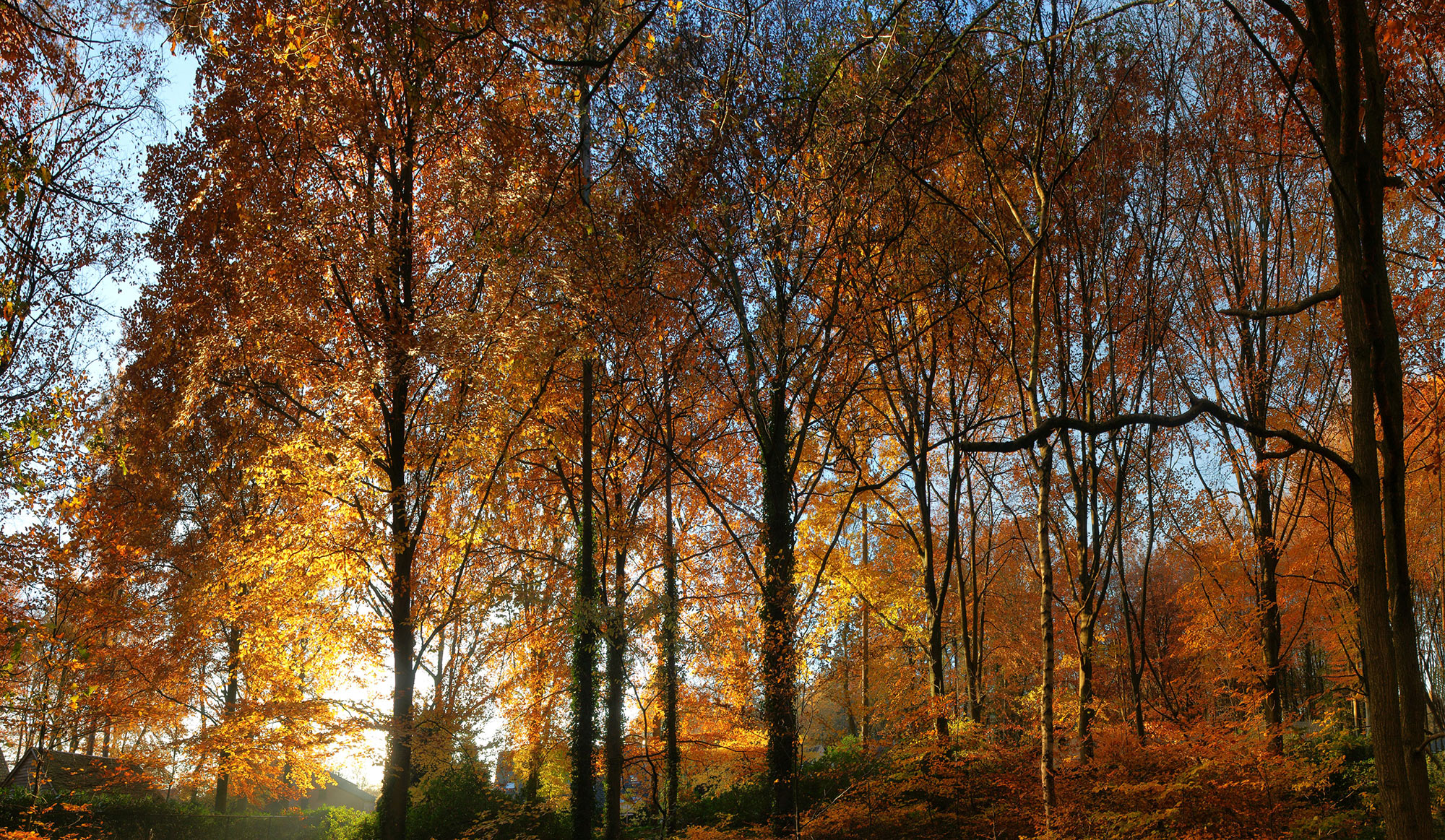
If going further back is no option, make it panoramical
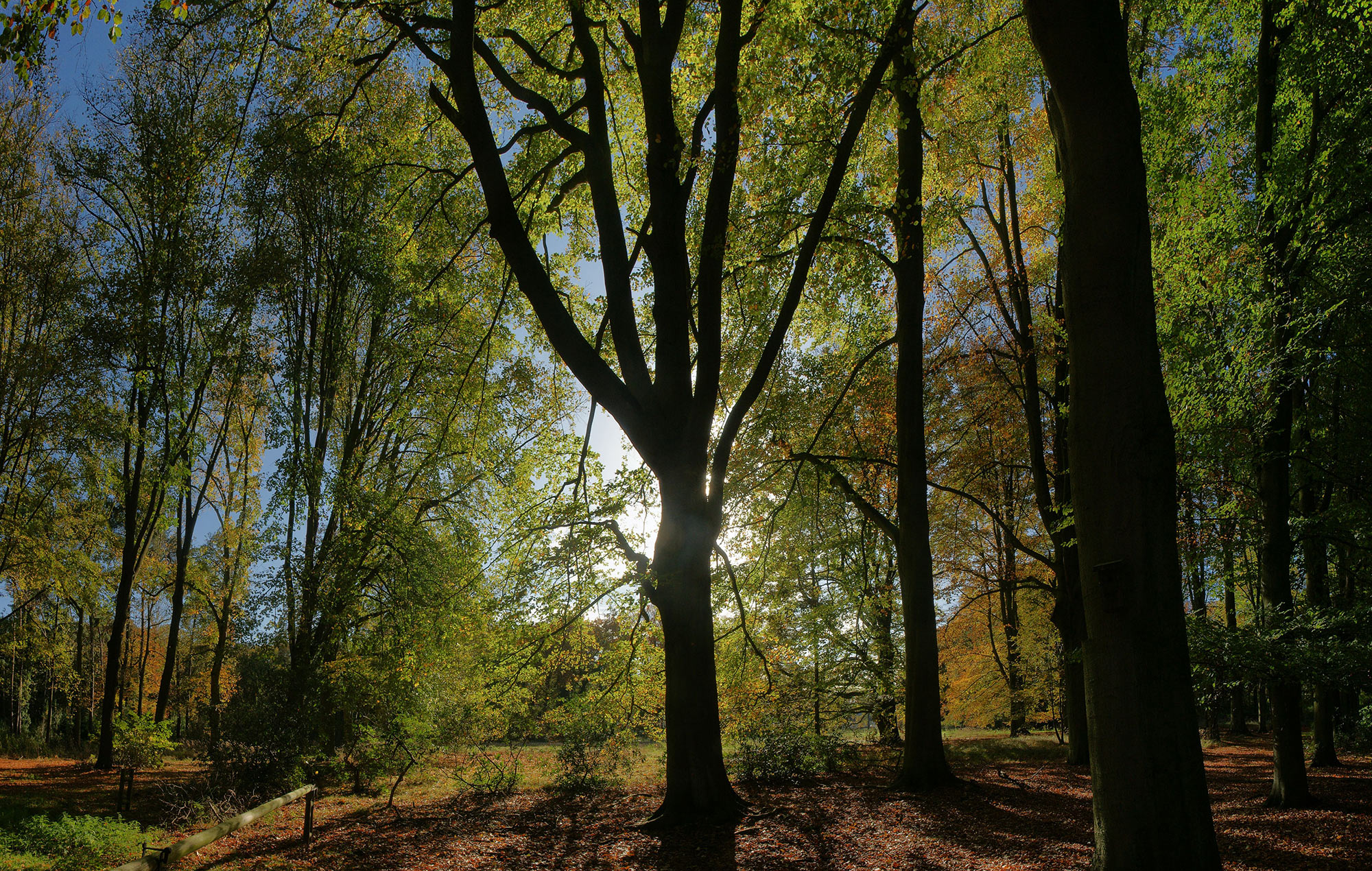
Hide the sun and work with counterlight
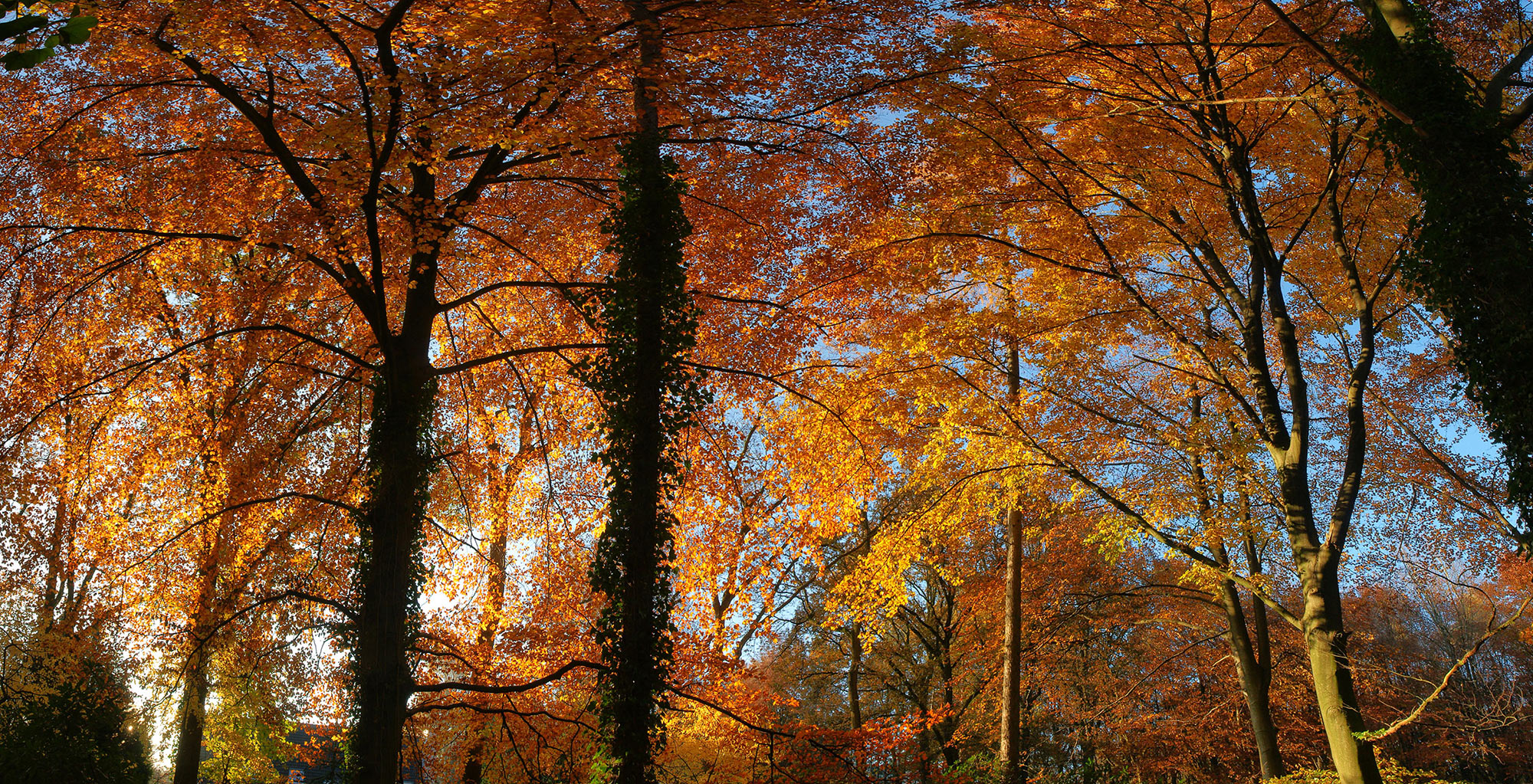
Panoramical picture of autumn if one can't get to the back enough
But the most amazing thing about my last walk was defenitely the discoveries I did on the ground.
Autumn is always the perfect time for mushrooms.. plants who only live shortly and come out of the humid darkness..
In autumn I always go out looking for toadstools and although this year I hardly found any, I did do a strange discovery..
I found purple mushrooms. really purple...
It seems they are called 'Amethyst Deceiver' and they are pretty rare so i'm very happy to have spotted them..
Since they are very small (2-3 cm) it's impossible to take good pictures of them standing up. The only solution is to go down, really low... to get on your belly and get wet and dirty on the drenched leafs..
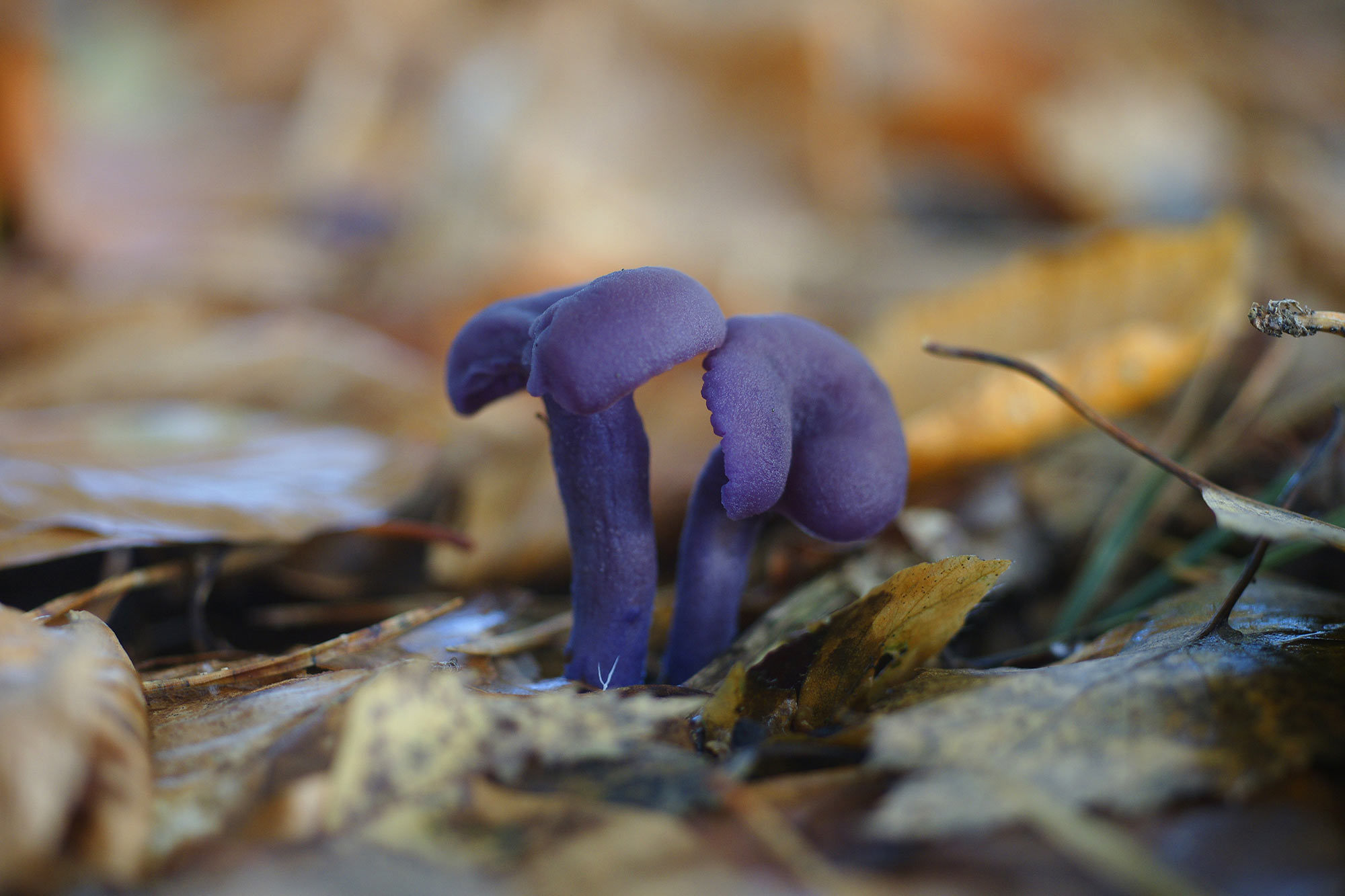
rare purple mushrooms, first without flash, 1/40 sec - 2.8, 50 mm macro lens
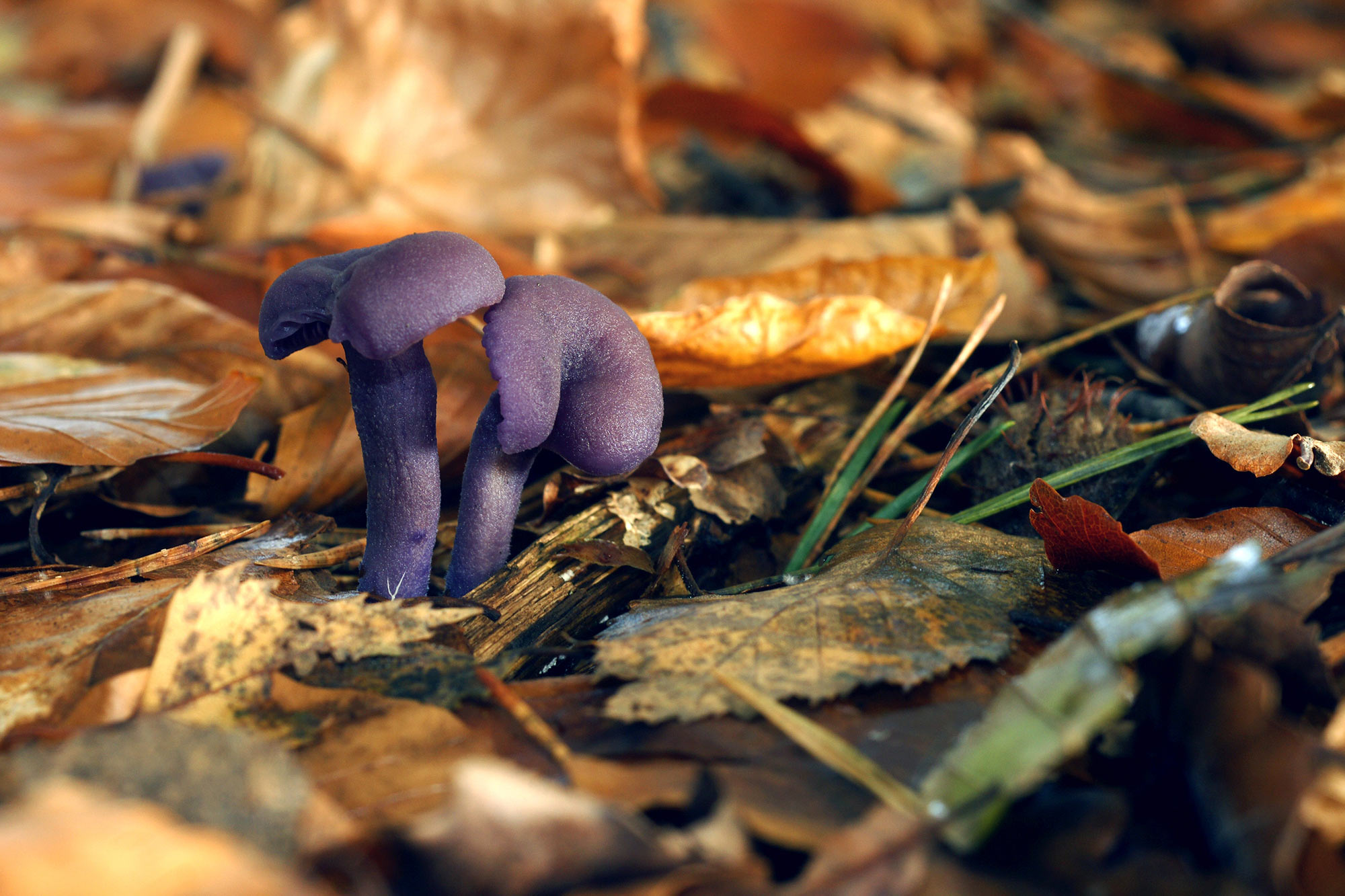 purple mushrooms, now with remote flash from the right, diafragme closed down to f 8 to get more depth of field and to keep some light in the back I lowered the shutterspeed till 1/13 sec, 50 mm macro lens
purple mushrooms, now with remote flash from the right, diafragme closed down to f 8 to get more depth of field and to keep some light in the back I lowered the shutterspeed till 1/13 sec, 50 mm macro lens
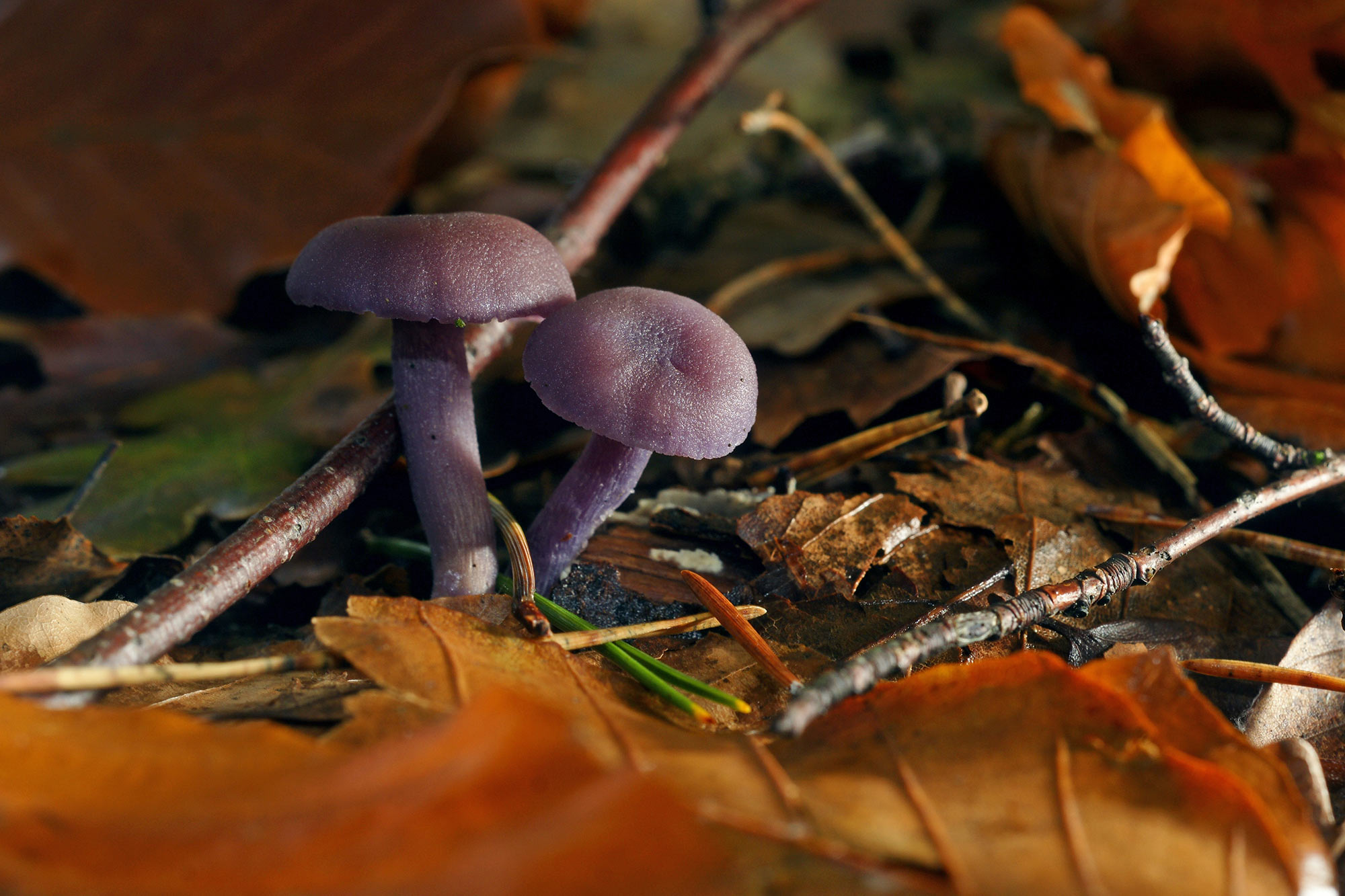 purple mushrooms, now with remote flash from the right, diafragme closed down to f 9 to get more depth of field and to keep some light in the back I lowered the shutterspeed till 1/13 sec, 50 mm macro lens
purple mushrooms, now with remote flash from the right, diafragme closed down to f 9 to get more depth of field and to keep some light in the back I lowered the shutterspeed till 1/13 sec, 50 mm macro lens
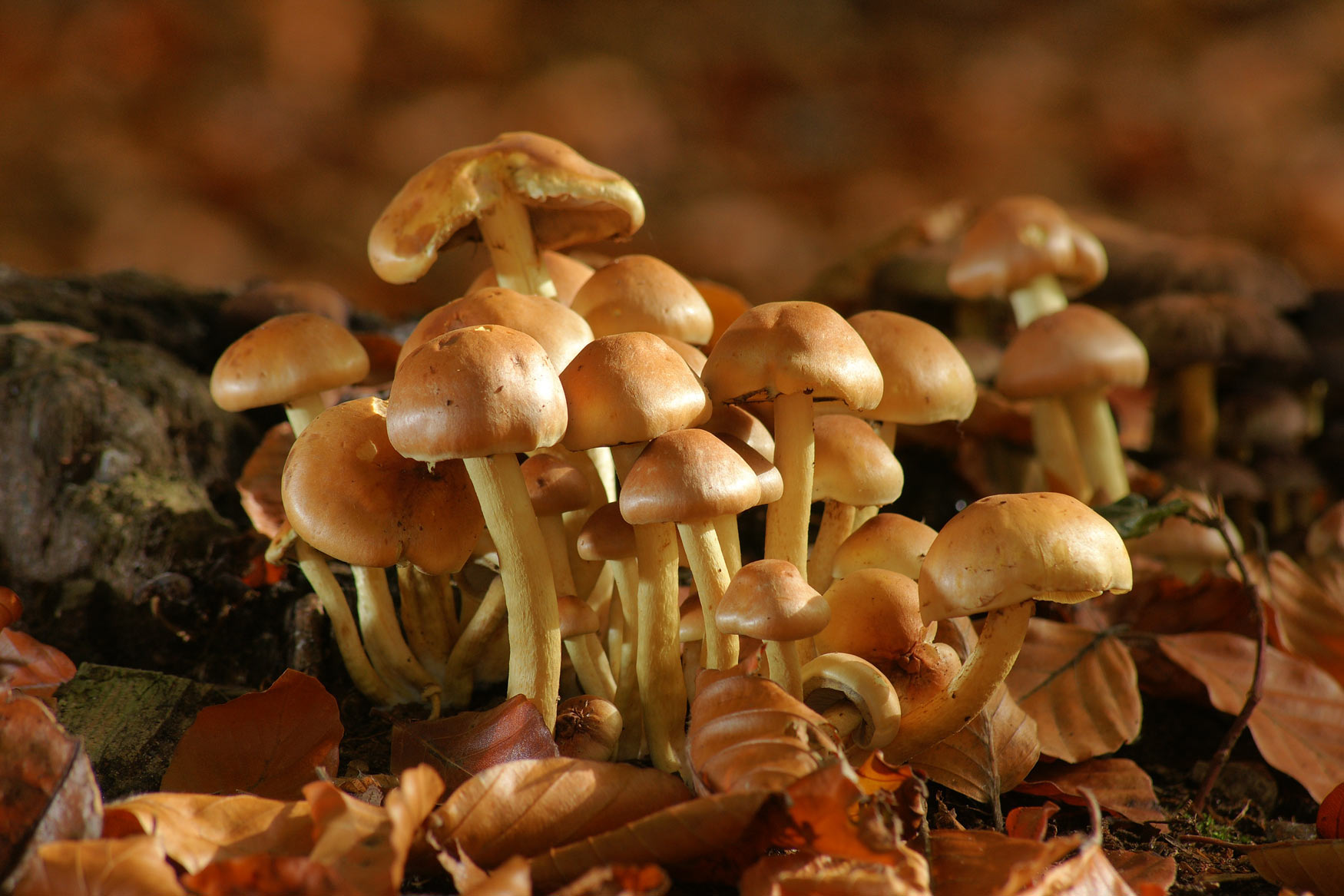 group of mushrooms, remote flash on the right
group of mushrooms, remote flash on the right
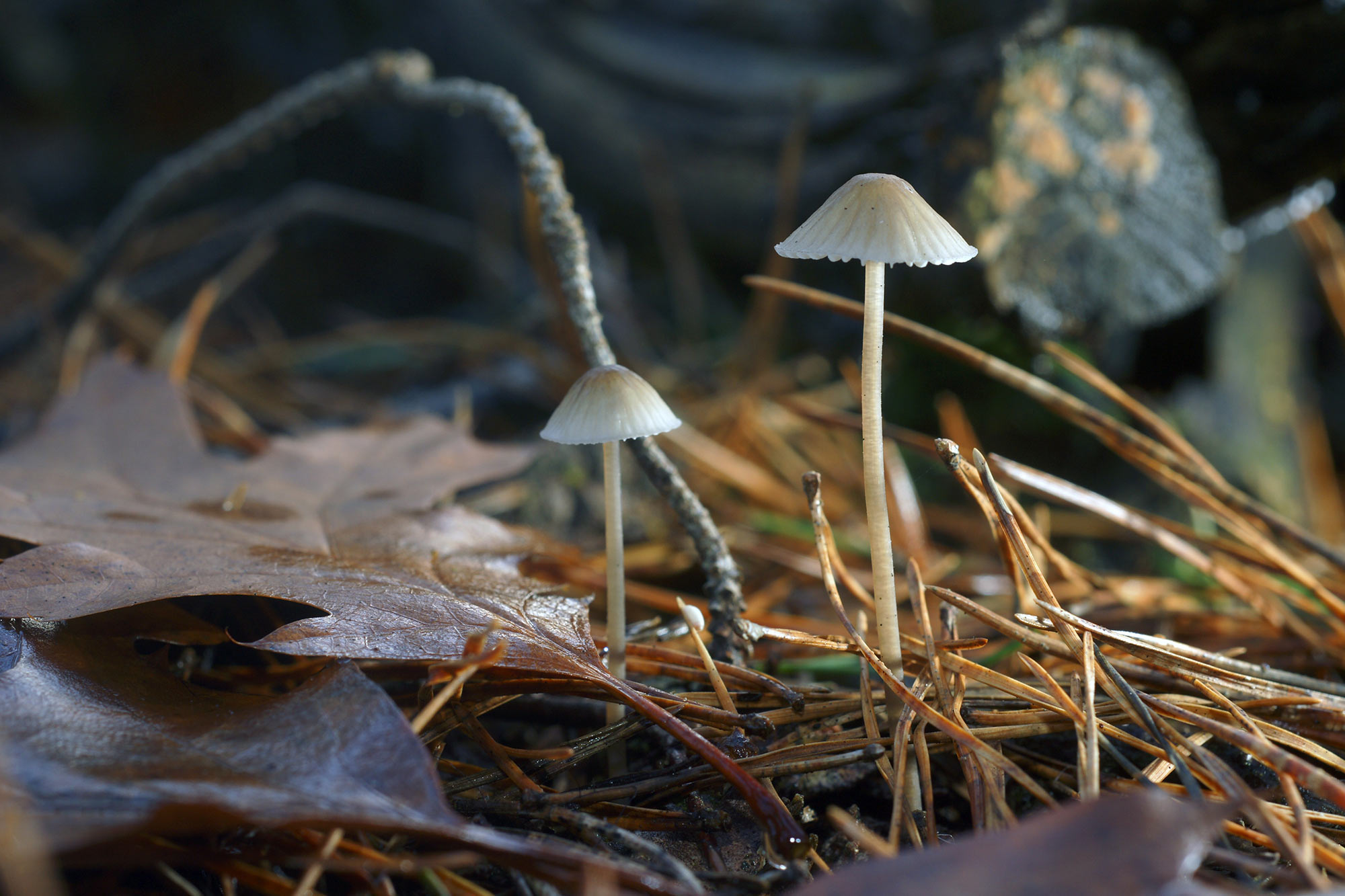 Very tiny mushrooms (just check the size of the pine needles), remote flash on the right - 1/30 sec - f 7.1
Very tiny mushrooms (just check the size of the pine needles), remote flash on the right - 1/30 sec - f 7.1
This also has the advantage that you can support your arms to keep your camera still. I almost never take a tripod with me and since mushrooms are always found on the dark bottom of the wood, it can be pretty difficult to get a clear shot..
I often use a 55-200 mm lens
but with that one (since it's not that bright (f 4 - 5.6) you end up rather often underneath shutterspeeds of 1/15 s, especially when you don't want to push up to much your ISO.
To prevent shaking I often use a remote flash which I place next to the mushroom so I can use a smaller diafragma and faster shutterspeed but it makes the background rather dark and it makes the light rather hard.. but it often is the only way to get a crips clear picture of mushrooms on the dark forest floor.
On the other hand, lowering the sutterspeed isn't that of a problem since with the closed diafragm, the scene merely gets lighted by the flash. and motion blur is very unlikely since exposure is done by the very short time the flash lights up.. Therefor, I often do lenghten the exposure till 1/15 sec or even longer with the use of a flash.
You're lying down anyway and with a good support and if no wind, your shots will be most likely be cristal clear...
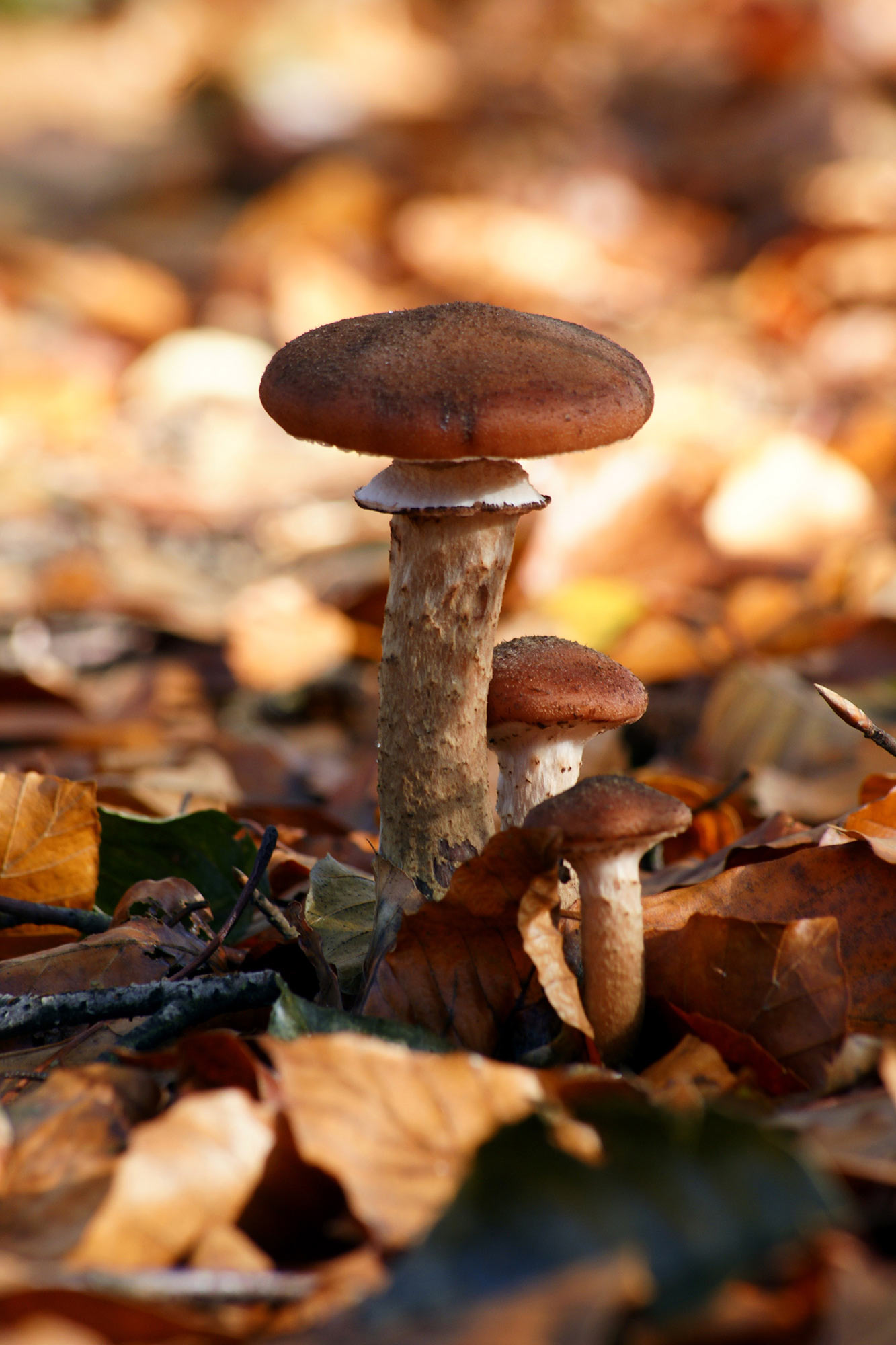
Triplet mushroom, shot without flash on 1/13 sec - f 9 - ISO 200 - 225 mm
Have fun eating dirt...
ET